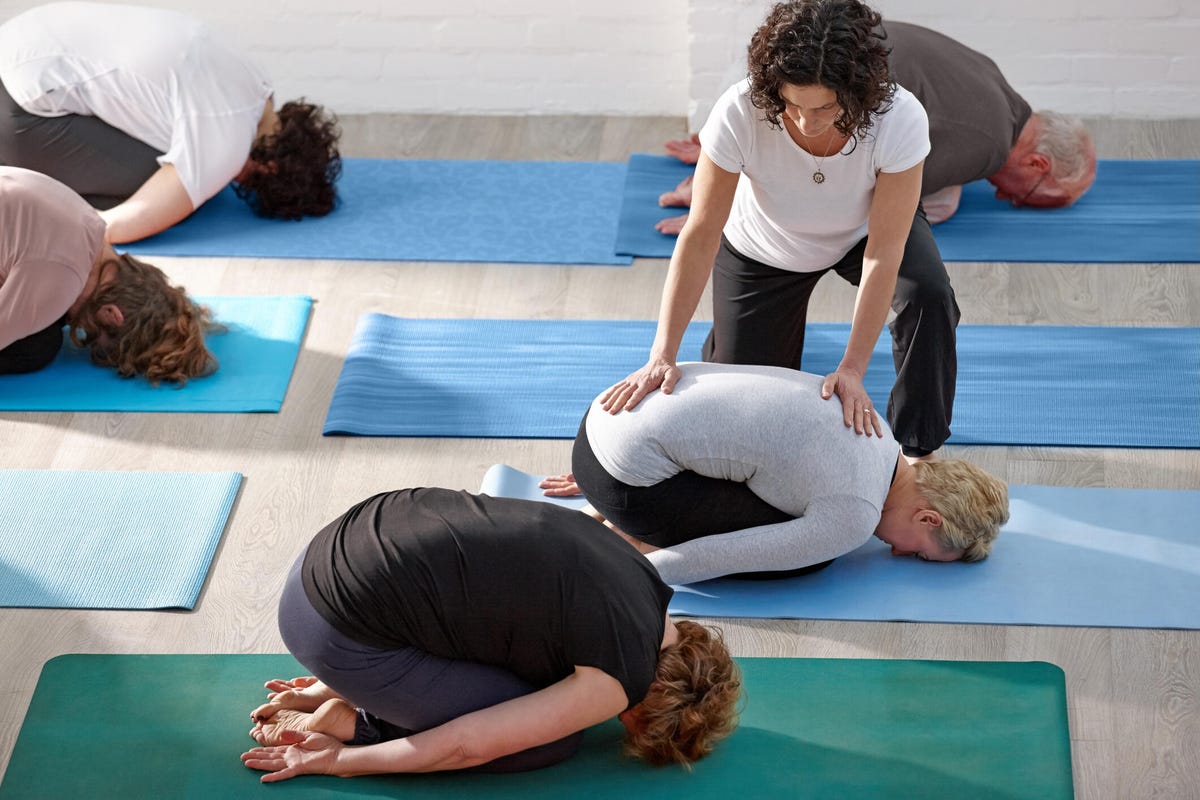Anyone can do the top 3 yoga poses to get better sleep
Have you tried using exercise to improve the quality of your sleep? Exercise can help you sleep better at night, but there are a few tricks you should know about. It all depends on the type of exercise and the duration of the exercise. You want to do some vigorous exercise earlier in the day to gain energy without compromising your quality of sleep. Light exercise like yoga can help you before bed because it can relax you.
If you’ve been in bed for a few hours and can’t fall asleep or have trouble getting a good night’s rest, try incorporating some calming yoga poses into your nighttime routine to fall asleep faster. Here’s what you need to know about yoga for sleep and the top three positions you can practice tonight.
Read more: Best Mattresses of 2024: Tested and Reviewed by Our Sleep Experts
How yoga can help you sleep
According to Chloe Kernaghan, co-founder of yoga studio Sky Ting, yoga it helps you sleep better in two ways: It helps relax the racing mind and calms the nervous system. “Yoga as a practice focuses on finding stillness in the mind, which is often the opposite state the mind is in when we have trouble sleeping (ie, your mind is racing!),” Kernaghan. he says.

Yoga includes aspects of the mind, but it is also a physical practice known to help calm the body’s stress response, or nervous system, through breathing and postures. Kernaghan explains, “Exercise can help calm the nervous system and shift you from a sympathetic state to a parasympathetic state, conducive to relaxation and deep sleep.”
What types of yoga classes are good for sleep?
Not all yoga classes are equally easy. Some classes are very fast-paced, such as power yoga, and can increase your heart rate. That’s a good thing, but you want to focus on movement that does the opposite if you’re feeling stressed and want to relax before bed.
“I recommend doing quieter, slower practices like yin yoga and restorative yoga,” says Kernaghan. “In these classes, you’ll generally sit for a long time, use more equipment for support and have less instruction from the teacher, so there’s a quieter space.”

If the thought of doing anything resembling exercise or yoga makes you cringe, you can also try yoga nidra, which Kernaghan recommends doing before bed. “[Yoga nidra] it is close to meditation but is usually done lying down. Little physical effort is required; “Instead, the practice of nidra helps move you from the beta state (the waking state) to the theta state (occurring when you are dreaming, very relaxed or meditating),” he says.
The 3 best yoga poses for sleep
The next time you’re having trouble falling asleep or catching quality Zs, try these poses in the evening to help you relax. You can do them all in order if you want, or pick and choose the few that make you happy right now.
Kernaghan says: “You can definitely do things on your own; a routine is good because you have someone to guide you, but if you’re used to the situation, doing a few before bed can be your perfect routine.” ,” Kernaghan says.
Child Support Status
“Front folds calm the body and with a tie at the knees and hips, this can also be a good way to stretch the hips and lower back. Make sure your head is supported, so if necessary, add another pillow to make it more comfortable,” says Kernaghan.
How to do it, according to Kernaghan:
- Start with your hands and knees touching the floor or bed.
- Bring your knees wide like a yoga mat, big toes touching behind you and sit your hips on your heels.
- Use a thick pillow or bed pillow lengthwise, placed between the legs so that the body is stretched forward, which should act as a gentle support from the lower abdomen to the head.
- Feel free to turn your neck to one side and breathe. Sit for three to five minutes, turning your head to the center if your neck is twisted.
Support Goddess Pose
“This simple hip-opener is the perfect way to relax and unwind. Having deep bone in the legs can help with digestion, and allowing the body to keep weight on the floor is a way good for releasing any lingering from your day,” Kernaghan says. (The video above shows a related exercise, not the one described here.)
How to do it, according to Kernaghan:
- Come into a sitting position with your feet in front of you.
- Put your feet together, your knees open in a butterfly, and use two pillows (one under the thigh/knee) as support.
- Since the body on the ground; feel free to use a folded blanket under the back of the head.
- Place your hands on your stomach or open your arms to the side. Cover your eyes if you want, and sit for three to five minutes.
Feet Up the Wall
“This post is so amazing, but as for sleeping, it’s great because it’s a simple change. The legs float in a few minutes, which helps the circulation so that the body doesn’t get confused when you sleep. I like to do this. Sometimes I stand on my bed — I just raise my legs above my head,” Kernaghan says.
How to do it, according to Kernaghan:
- This position is exactly what it sounds like: You sit next to a wall, bring your torso to the floor and lift your legs up the wall.
- I recommend bringing your chair close to a wall, but if your legs or lower back are tight, keep your knees bent.
- I like to put a pillow under my hips so that my pelvis is slightly higher than my heart.
- Stay for three to five minutes. If your legs feel tight, you can always kneel down and push your knees apart with your feet together.
With these three sleep yoga poses in your nighttime toolkit, you’ll be well on your way to sweet dreams.
#top #yoga #poses #sleep
